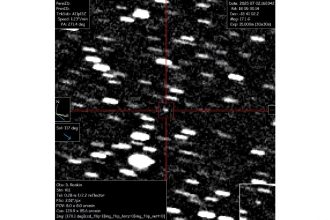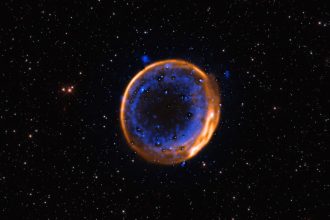The Cambrian explosion, recognized as a pivotal moment in the evolution of life on Earth, is now being reevaluated. Recent research indicates that this remarkable increase in biodiversity, traditionally thought to have started around 530 million years ago, may have actually initiated millions of years earlier.
A study published in the journal Geology presents evidence that complex-bodied animals thrived as early as 545 million years ago, predating the established timeline for the Cambrian explosion. Researchers analyzed trace fossils from this era, revealing mobile creatures with advanced biological traits, including segmented bodies, muscular structures, and directional movement.
The study was led by Olmo Miguez Salas, a postdoctoral researcher at the University of Barcelona, alongside Zekun Wang from the Natural History Museum in London. Miguez Salas stated, “The trace fossil record provides valuable information about evolutionary periods when soft-bodied fauna were dominant.”
Traditionally, studies of the Cambrian period have concentrated on organisms with hard body parts due to their greater likelihood of fossil preservation. However, the soft-bodied life forms that flourished during the Ediacaran-Cambrian transition created trace fossils—markings of their activities—which offer a unique perspective on early animal behaviors and adaptations.
Focusing on the Ediacaran-Cambrian boundary is essential as it encapsulates a critical transition in life’s diversity, highlighting the shift from soft-bodied Ediacara organisms to the hard-bodied life forms of the Cambrian. Miguez Salas elaborated, “The transition to the Cambrian involved the extinction of much of the Ediacara fauna, and a rapid diversification of complex multicellular life forms with hard parts… this is the evolutionary core from which most modern animal phyla emerged.”
The trace fossils examined by Miguez Salas and Wang indicate these early organisms were not merely simplistic, immobile entities but rather complex beings capable of movement and environmental interaction. They found signs that these ancient animals likely had “coelomic hydrostatic bodies, with an anteroposterior axis, muscles and possibly segmentation.”
The ability to move directionally in response to stimuli reflects a significant advancement in evolutionary development. The findings suggest that the foundational elements of the Cambrian explosion began evolving much earlier than established theories had proposed.
This research carries substantial implications for our understanding of early animal evolution. With evidence that sophisticated mobility existed millions of years earlier than anticipated, Miguez Salas remarked, “This new discovery opens the door to quantitatively study future Ediacara trace fossils discovered in the coming years and to corroborate that the Cambrian explosion did not happen in the Cambrian, but many millions of years earlier.”
The results also provide a fresh perspective for studying major evolutionary milestones, including the diversification events of the Ordovician period. The new methodologies offered by the researchers enhance the precision of analyzing fossilized traces of animal movement, paving the way for new insights into the evolutionary history of life on Earth.












